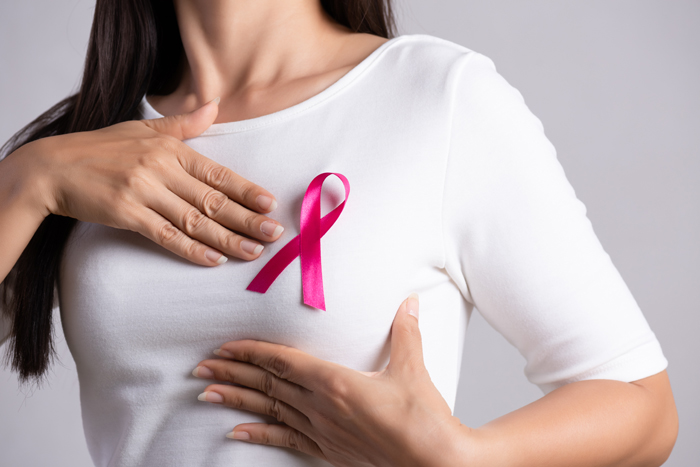Breast Health
Women should know that there is no specific size and shape for healthy breasts. Breast shape and size tends to change from adolescence to menopause and it's pretty much normal as long as the change is not an indication of some underlying condition.
What a normal breast looks and feels like and how to conduct breast check-ups regularly are some things every woman should know irrespective of their age.
Breast-related health issues are on the rise among women nowadays. One of the leading causes of deaths in women is breast cancer. Breast health problems include breast tumors, breast discomfort, and nipple discharge. Women should pay attention to their breasts the same way they take care of their skin.
Your doctor may teach you self-examination of breasts at home. However, self-examination cannot detect the actual problem but can detect the presence of abnormality in your breast. Self- examination can lead to early detection and prevention of breast cancer.
You can search online for a gynecologist near you or gynecologist in Pune. You can also visit a multispeciality hospital near you.

What are the signs of healthy breasts?
Your breasts are completely normal if:
- They are of slightly different sizes.
- Hair around nipples
- Position of one breast slightly lower than the other one
- Tenderness in breasts during your periods
What are the signs of unhealthy breasts?
Immediately seek medical attention if you notice:
- A firm breast lump
- Swelling around the armpit, collarbone and breast areas
- Appearance of redness or dryness around the nipple
- Thick orange peel-like skin around the breast
- Discharge of blood and fluid other than breast milk from nipples
- Itching in breasts
Are unusual symptoms always a matter of concern?
Unusual symptoms aren't always an indication of a serious condition. Changes can be due to some harmless conditions like irritation and infection, but it's always better to get them checked by a doctor in order to avoid any complications.
What are the common non-cancerous breast disorders?
There are several types of benign breast disorders found in young adults and teens, such as:
- Breast pain
Breast pain can be caused by:- Swelling in the breast tissues usually during the menstrual cycle
- Infection in the breast tissues
- Some sort of injury
- Breast cysts
- Cysts
Cysts are the fluid-filled sacs formed in the breast tissue. It's an old age condition but can affect teens as well. Cysts can either feel soft or hard. They may appear enlarged just before the menstrual cycle. Cysts close to the skin surface may feel like large blisters. - Fibroadenomas
Fibroadenomas are characterized as smooth, firm and solid benign lumps. Women in their early 20s are more prone to fibroadenomas. These lumps are rubbery, painless lumps in the breast tissues. - Sclerosing adenosis
In sclerosing adenosis, excessive growth of breast tissues occurs, often resulting in breast pain. - Breast tenderness
Mild breast tenderness generally occurs before the menstrual cycle and it can also be an early sign of pregnancy. - Uneven breast size
Having asymmetric breasts are common, especially during the initial breast development phase. Although medical examination needs to be performed to eliminate conditions of breast mass, cyst or abscess. - Breast cancer
Breast cancer develops when some breast cells begin to grow abnormally, according to doctors. These cells divide at a faster rate than healthy cells and continue to grow, leading to a lump or mass. Cells in your breast may spread to your lymph nodes or other body parts.
There are 4 types of breast cancer.
- Ductal Carcinoma In Situ (DCIS): It's a non-invasive cancer in which abnormal cells in the walls of the breast milk duct have been found.
- Invasive Ductal Carcinoma (IDC): It is a type of invasive cancer with aberrant cancer cells in the milk ducts and they move to other sections of the breast tissue.
- Lobular Carcinoma In Situ (LCIS): It is a disorder in which abnormal cells are found in the breast lobules.
- Invasive breast cancer(LBC): it occurs when breast cancer spreads to the adjacent normal tissue. It can also spread to other body parts via the blood and lymphatic systems.
How are breast disorders diagnosed?
Breast disorders are first diagnosed through a physical examination followed by tests like ultrasound, mammogram and fine-needle aspiration.
What are the treatment options available for breast disorders?
Treatment depends upon the breast disorder you have. Treatment generally involves medication, drainage of fluids by needle and lastly surgical procedures.
When do you need to see a doctor?
If you find a lump or other change in your breast, make sure that you consult your doctor immediately.
For more information, call 18605002244 to book an appointment at Apollo Spectra Hospitals, Pune, Maharashtra.
Conclusion
Breast health problems for many women include breast tumors, breast discomfort, and nipple discharge. It's also crucial to know about common breast health screening and diagnostic tests to maintain breast health.
You have to maintain a healthy weight, drink alcohol in moderation, do physical exercise, and limit menopausal hormone therapy to improve breast health. You can also go for breast screening and mammogram to check your breast health.
Vitamin D is the best vitamin to promote breast health. If you don’t get enough exposure to the sun, make sure that you take some vitamin D supplements.
If you are comfortable with them, you can always wear bras even when you sleep. It will prevent your breasts from getting saggy. But it will not have any clinical implications, like it will not prevent your breasts from developing breast cancer.
Our Top Specialities
NOTICE BOARD
CONTACT US
CONTACT US
 Book Appointment
Book Appointment


.svg)
.svg)
.svg)
.svg)








